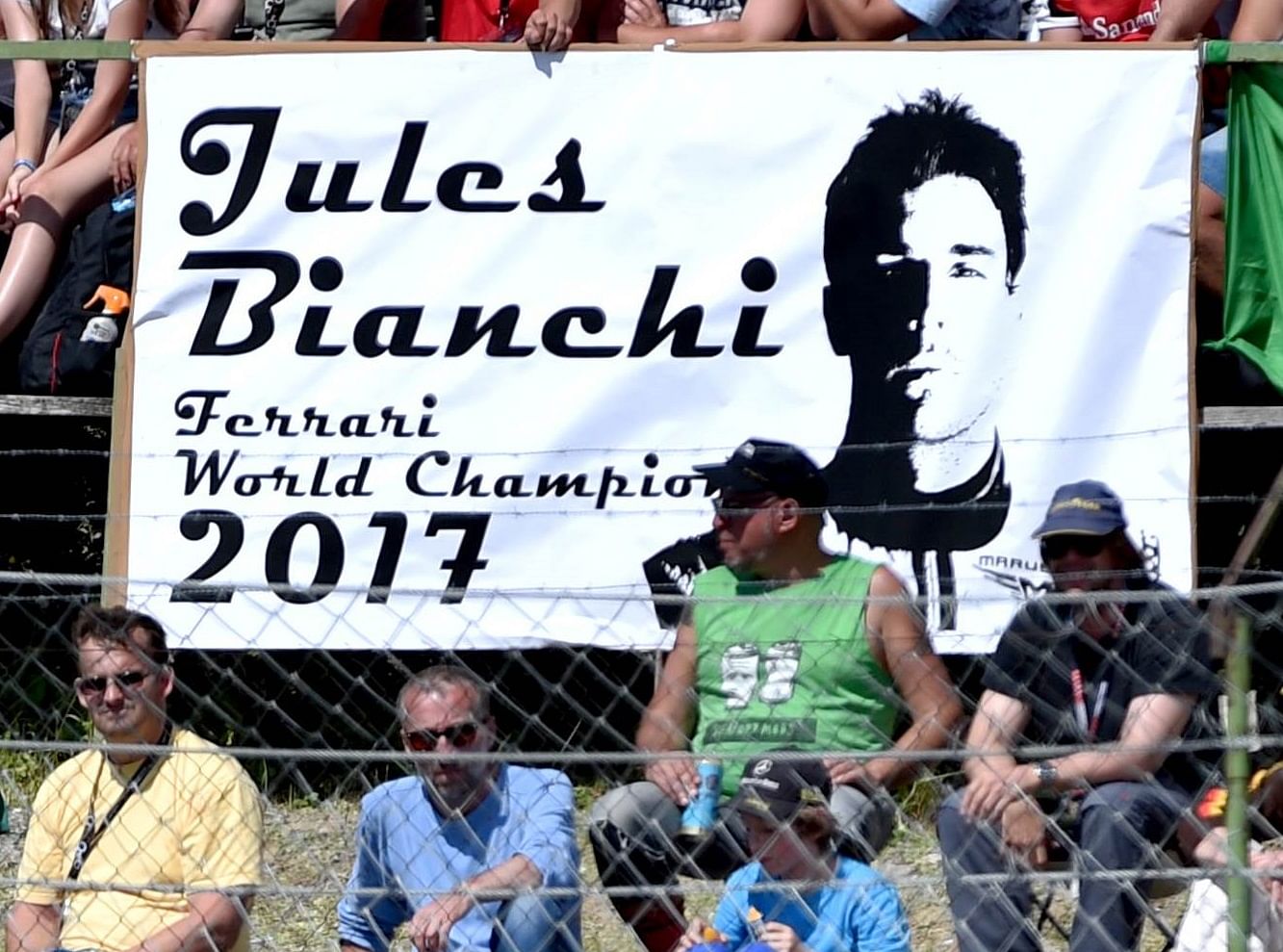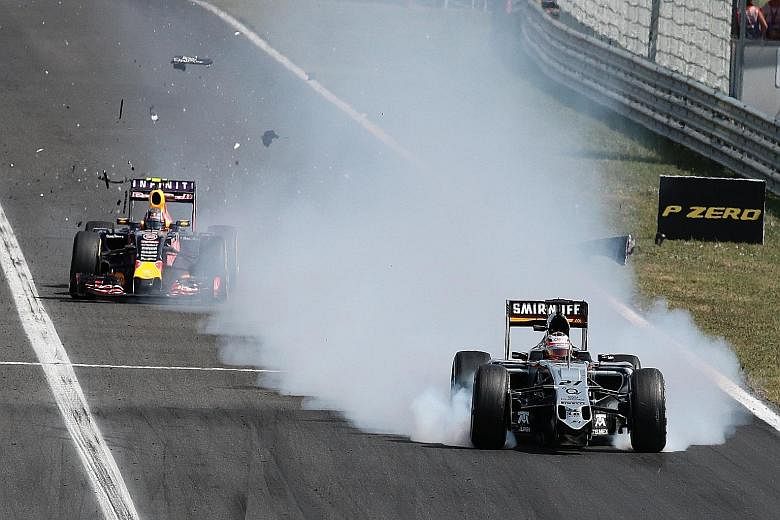Almost a week has passed, but a lump in the throat remains difficult to dislodge.
Jules Bianchi, the first driver of his generation to be killed in action in Formula One, will clearly not be easily forgotten. Even so, am I alone in feeling that the tribute to his memory was inappropriately, even dangerously ill-timed?
If you saw it, you would have been inhumane not to feel its emotion.
Ten minutes before the start of last Sunday's Hungarian Grand Prix, the 20 drivers placed their helmets - and Bianchi's damaged helmet - on the tarmac. Then, as the racers linked arms, Felipe Massa broke ranks.
He ushered Bianchi's mother and father, brother and sister into the drivers' circle. A helicopter whirred overhead, draping the red, white and green Hungarian flag over the assembled group of mourners.

Massa, with his right arm around Philippe Bianchi's shoulder, had his eyes shut tight as violins played and a soprano sang the solemn Hungarian national hymn.
After it was over, the Bianchi family left the circle, the drivers collected their helmets, and strapped themselves into the cockpits.
Out of this emotional turbulence, they were revving the engines, ready for what the late, great Argentinian racer Juan Fangio described as driving as fast as you can, as close as you dare to the edge of disaster.
Because, or in spite of all that had happened in the previous week, during which Bianchi was buried in Nice, France, the drivers put on the most daring race of this season - to the brink, and beyond, the edge.
"It was a tough start, a tough week, obviously with (the funeral on) Tuesday," said race winner Sebastian Vettel, who had helped to shoulder Bianchi's coffin in Nice.
"And then to think about Jules again on the grid," Vettel added, "Certainly it was very emotional and difficult to get back in the rhythm. But you find yourself back in the car, visor down and there are so many things you have to think about, there's not really much space for other things."
There was less space than usual.
Bianchi was French. Vettel is German, Massa is Brazilian, Fernando Alonso is Spanish and so on. They were rivals, and close friends.
Few of them were old enough to remember - and some like Daniil Kvyat and Max Verstappen were not even born - when the last F1 driver, Ayrton Senna, died at the wheel at San Marino in 1994.
The Russian Kvyat, 21, snatched second place in Hungary last Sunday.
Verstappen, aged 17, came fourth, and in the days that followed the Hungarian GP he was back behind a wheel, taking lessons in preparation to apply for a licence to drive on the roads of Belgium or his country, the Netherlands.
It's a long time since I was 17, so maybe I can only guess whether it is easier or harder to get back in the car and drive at 300kmh against the modern greats of the sport.
Somewhere close to that top speed at the Hungaroring, the front wing of Nico Huelkenberg's Force India car broke away on the fastest straight.
"I felt some vibrations and suddenly the wheels lost contact with the ground," he said, shaken but not broken. "You can't decelerate, can't brake properly, can't turn, and I just went straight off into the barrier."
The barrier of rubber tyres, the strength of the carbon fibre casing around the cockpit, and the safety features built into motor racing as a result of the Senna crash all those years ago contributed to Huelkenberg's survival.
Bianchi had not been so lucky. When he lost control at Suzuka, his car hurtled into a recovery crane at the side of the track. He never regained consciousness and at 25 a promising career - destined, everyone believed, to elevate him to Ferrari next season - was over.
The Bianchi family bore their nine-month vigil with incredible dignity. If such a thing can be accepted, that family certainly knew the risks.
Mauro Bianchi, the Italian-born grandfather of Jules, was severely burned in an accident at the 24-hour Le Mans race in 1968. Lucien Bianchi, Jules' great-uncle, was killed during practice at Le Mans the following year.
A family drawn to speed suffering death and disaster over the span of almost half a century.
Yet the modern generation had precious little knowledge of paying the ultimate price, although Felipe Massa came fearfully close in 2009.
During practice for the race at this same Hungargoring circuit, Massa was struck on the head by a suspension spring that broke off the car in front, driven by his compatriot Rubens Barrichello.
The helmet, the airlift to hospital, and a titanium plate inserted into his skull during emergency brain surgery, saved Massa to race another day.
So there was Massa, his eyes tightly shut, clinging to the shoulder of Bianchi's father. And there, some minutes later, the same Massa failed to hit his positional mark on the grid, causing a rare re-start for the entire company of drivers and adding to the tension.
Seasoned F1 ex-drivers asked repeatedly how could the drivers, the younger ones particularly, get their minds and their hearts under control for the race after this?
Even those who had had to race on after the death at San Marino of not only Senna, but of the Austrian driver Roland Ratzenberger a day earlier during qualifying, were asking aloud in front of television microphones on Sunday.
The answer was a race of rare thrills and spills, of daring overtakes, and littered with errors of judgment, including four unusual errors by the leading F1 driver today, Lewis Hamilton.
It was as if they were driving dodgem cars rather than potentially lethal race cars. Mercifully only the cars, not the men inside them, absorbed the damage.
Once the visor is down, Vettel concluded, the love of racing is bigger than anything else. The Bianchi family heard him say: "This victory is for Jules."


